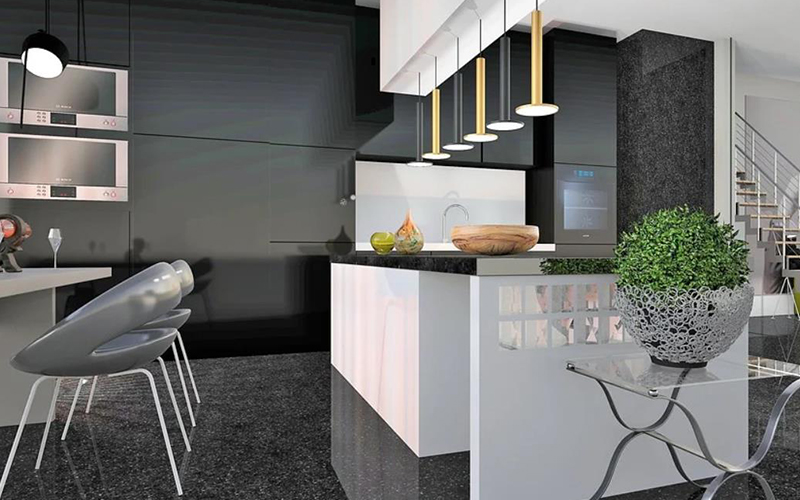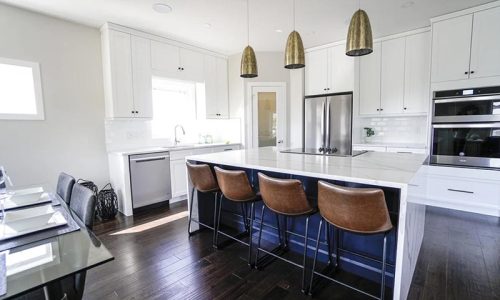
Have you ever walked into a small kitchen and thought, ‘This looks like it belongs in someone’s apartment’? Well, if your kitchen doesn’t quite live up to its potential, you’re not alone. This section will lead you to design a kitchen on a budget to deliver the best of what this space has to offer. By learning some tricks of the trade on kitchen layout for small homes, you can transform your tiny space into an efficient cooking center that reflects your unique style.
Kitchen layouts are divided into three types:
L Shaped Layout
The most common type of layout is the “L” or “U” shaped plan, with walls with cabinets on both sides of the space. These walls create three separate work areas, including one spot where you can sit down for food preparation. An “L” shaped design is the most productive plan for most kitchens because it offers the maximum amount of storage and counter space possible in a modest-sized room. This type of layout is more functional for both cooking and cleaning but does not give the illusion that there is more room.
Linear Layout
A linear layout is desirable when you need to separate the food preparation area from the dining area. When using this plan, one of the back kitchen walls is removed and replaced with a countertop and cabinets on either side. The actual cooking space can be an island or open shelves on one wall, depending on how much counter space you need. For people who do not have a separate dining room, this layout offers the least storage but most allows for separation. This type of kitchen can be the most efficient because one half of the cooking area is not being used while you are eating.
U Shaped Layout
The second style of kitchen layout, called a “U” shaped plan, involves dividing the room into three distinct sections. The first section includes an oven or cooktop with cabinets above and below to store dishes or pots and pans. There are also often upper cabinets located on the other side of the room. The second section is usually an area where you can sit down for food preparation or dining, while the third includes a sink and countertop. This plan gives you more space compared to an L-shaped design but has less storage space. There are no freestanding kitchen cabinets involved in this type of kitchen layout. There’s also less work surface for food preparation.
Galley Layout
The “galley” style of kitchen is essentially made up of two parallel walls, with one wall containing the appliances (such as the stove) and another wall where cabinet storage is located. This type of plan offers little flexibility when positioning your chairs for eating because you have to rest at a 90-degree edge from the kitchen counter. In addition, this plan is the least functional because it limits your ability to make food while walking between cabinets and the stove or sink. However, galley kitchens are often found in older homes that were not designed with modern conveniences in mind.
These plans work with minimal space because they maximize available storage and work surfaces using L-shaped walls and aisles. By utilizing a design that corresponds to your lifestyle, you can create an efficient kitchen on any budget, no matter how modest or grandiose your tastes may be!



